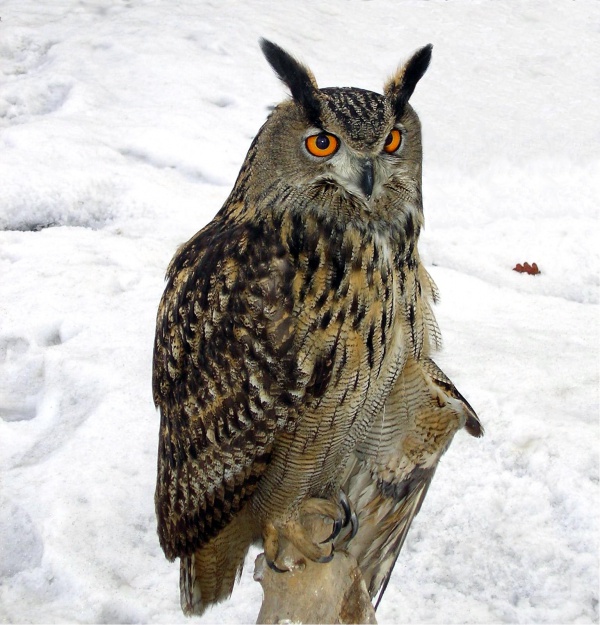Facts About Eurasian eagle-owl
The Eurasian eagle-owl, also known as the European eagle-owl, is one of the largest owl species in the world. Found across much of Eurasia, this magnificent bird can grow up to 75 cm in length and boast a wingspan of 188 cm, particularly in females. They are easily identifiable by their prominent ear tufts, orange eyes, and a blend of mottled and barred feathers on their upper parts, wings, and tail.
These owls exhibit remarkable adaptability, inhabiting a variety of environments such as mountains, forests, steppes, and even urban areas. As nocturnal predators, they primarily hunt small mammals, birds, and other vertebrates, utilizing their acute senses and silent flight to their advantage.
The Eurasian eagle-owl has a broad range and a substantial population, estimated to be between 250,000 and 2.5 million individuals. This extensive distribution has earned them a "least concern" status from the IUCN. Typically, they breed in secluded locations like cliff ledges or gullies, laying an average of two eggs that hatch asynchronously. The female undertakes incubation while the male provides food. They care for their young for about five months.
There are at least 12 subspecies of the Eurasian eagle-owl, each exhibiting slight variations in size and coloration. These owls are generally sedentary, maintaining the same territory throughout their lives, though they may relocate if the climate becomes too severe. While mostly active at night, they can also be observed during the day in northern regions during summer. Their calls play a significant role in their behavior, particularly in marking territory and courtship.
Their diet is diverse, including mammals, birds, reptiles, amphibians, fish, and large insects. As apex predators, they face few natural threats, but human activities pose significant risks. Electrocution from power lines, traffic accidents, and shooting are common causes of death. Conservation efforts focus on habitat protection and reintroduction programs, particularly in areas where they have been extirpated due to human persecution.
The Eurasian eagle-owl can thrive in various habitats, from coniferous forests to deserts, and often prefer areas with cliffs and ravines. They can live at elevations ranging from sea level to high mountains and adapt to different climatic conditions. While they thrive in remote areas, they can also be found in urban environments if there is ample prey.
During breeding season, males establish territories and use high vantage points to call and attract females. They do not build nests but utilize natural surfaces like rocks or ground depressions for laying eggs. The incubation period lasts between 31-36 days, and the chicks grow rapidly, becoming independent after 20-24 weeks. In the wild, they can live up to 20 years, and even longer in captivity.
Conservation challenges include electrocution from power lines, vehicle collisions, and persecution. Solutions such as insulating power lines and public education are helping mitigate these threats. Reintroduction programs in countries like Germany have proved successful, although issues like genetic diversity and ongoing human threats still need to be addressed.
In Great Britain, the presence of Eurasian eagle-owls is a subject of debate. Some argue that they have naturally recolonized from Europe, while others believe they are escapees from captivity. Regardless, their opportunistic hunting can impact conservation-dependent species, making population management a complex task.

 Serbia
Serbia